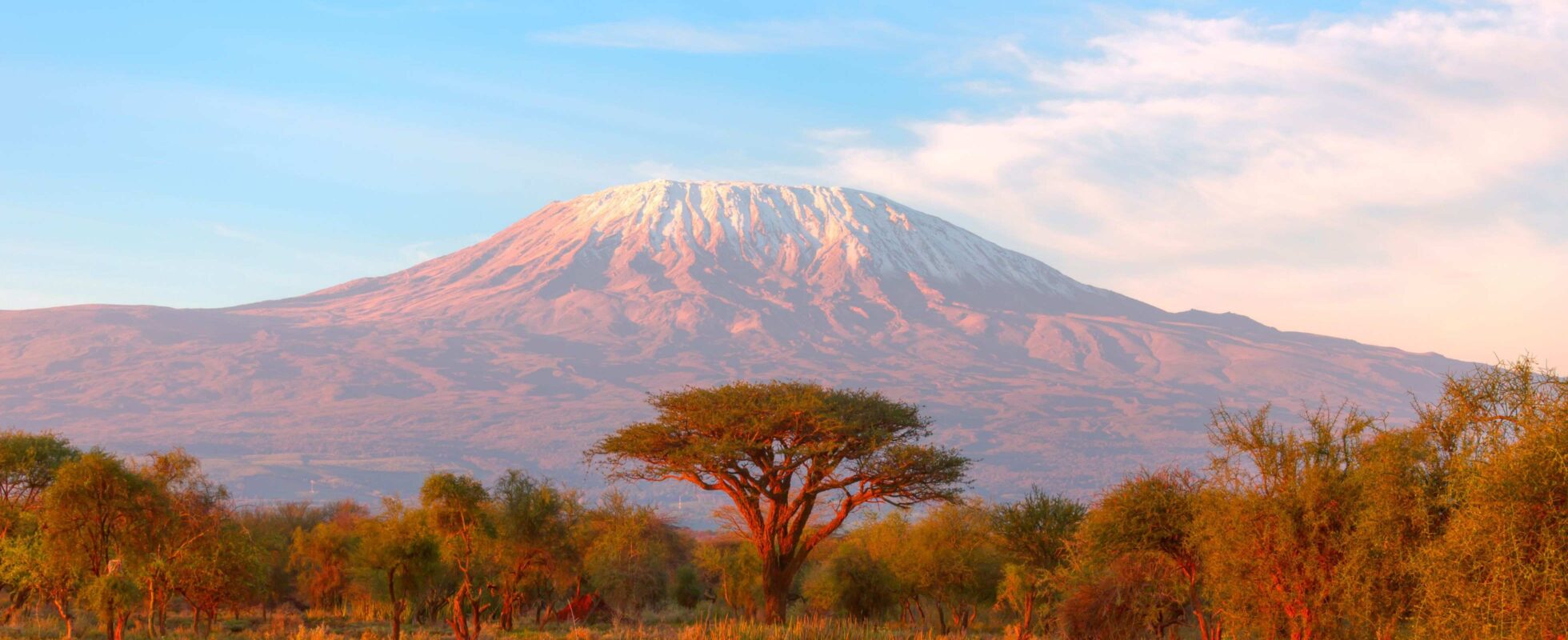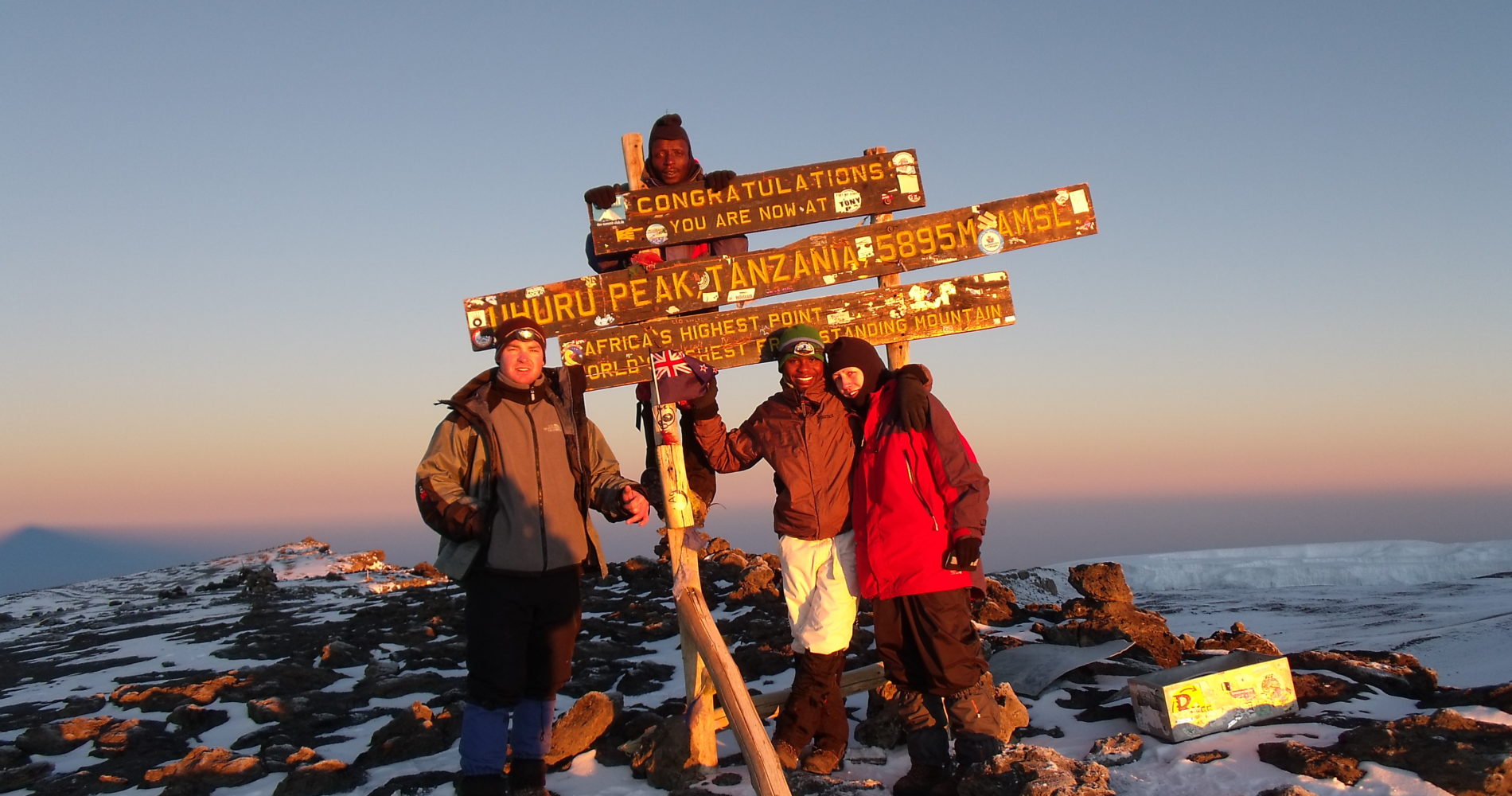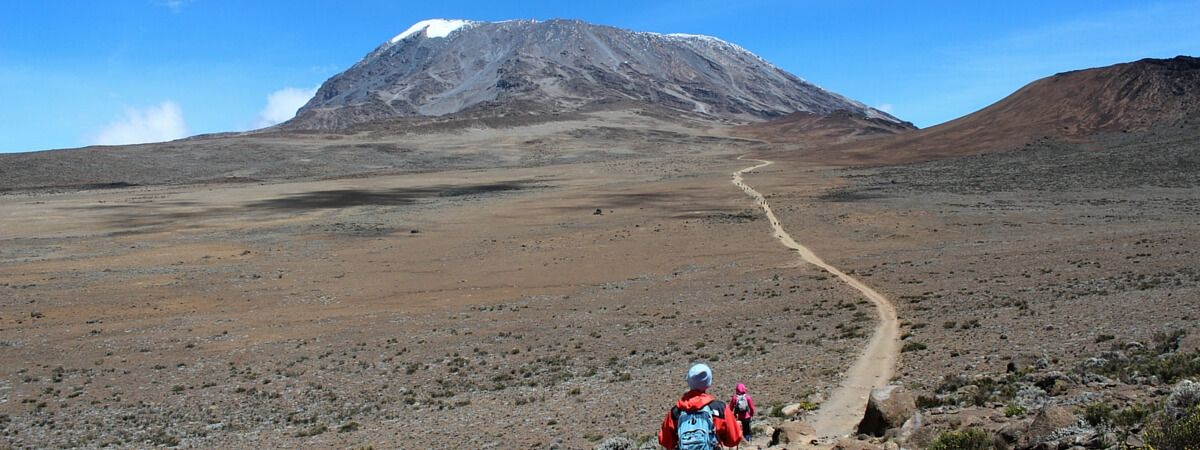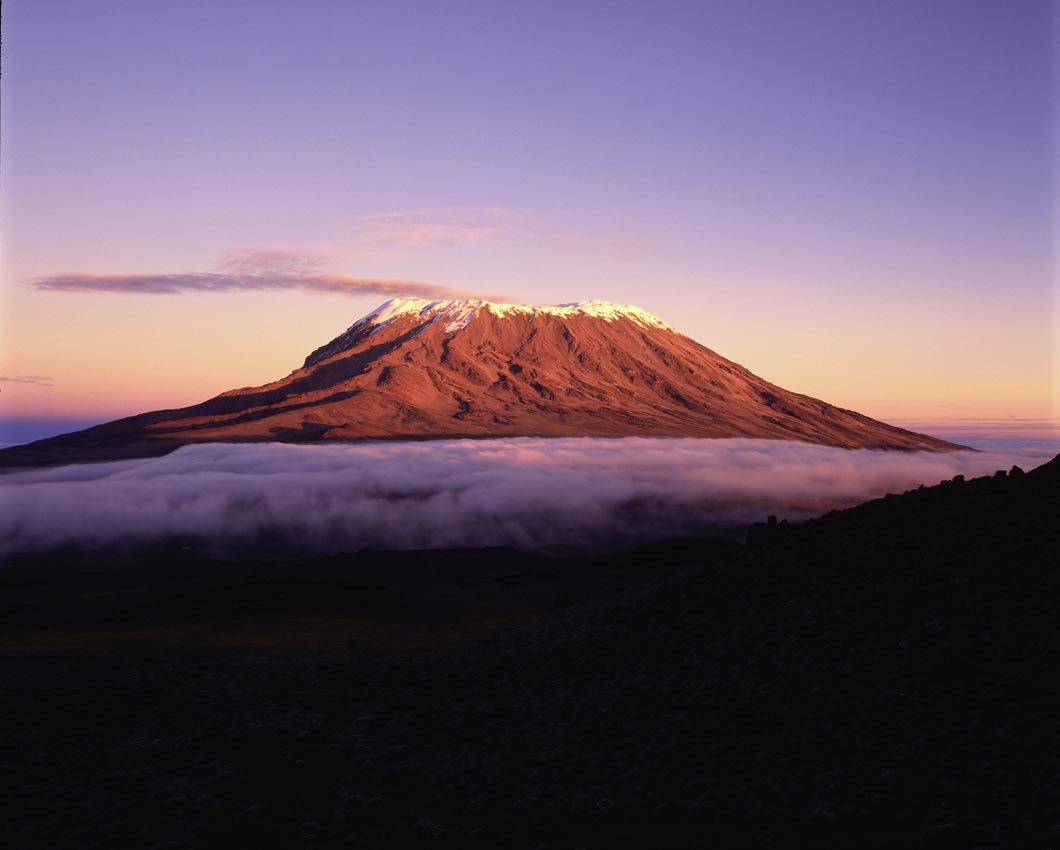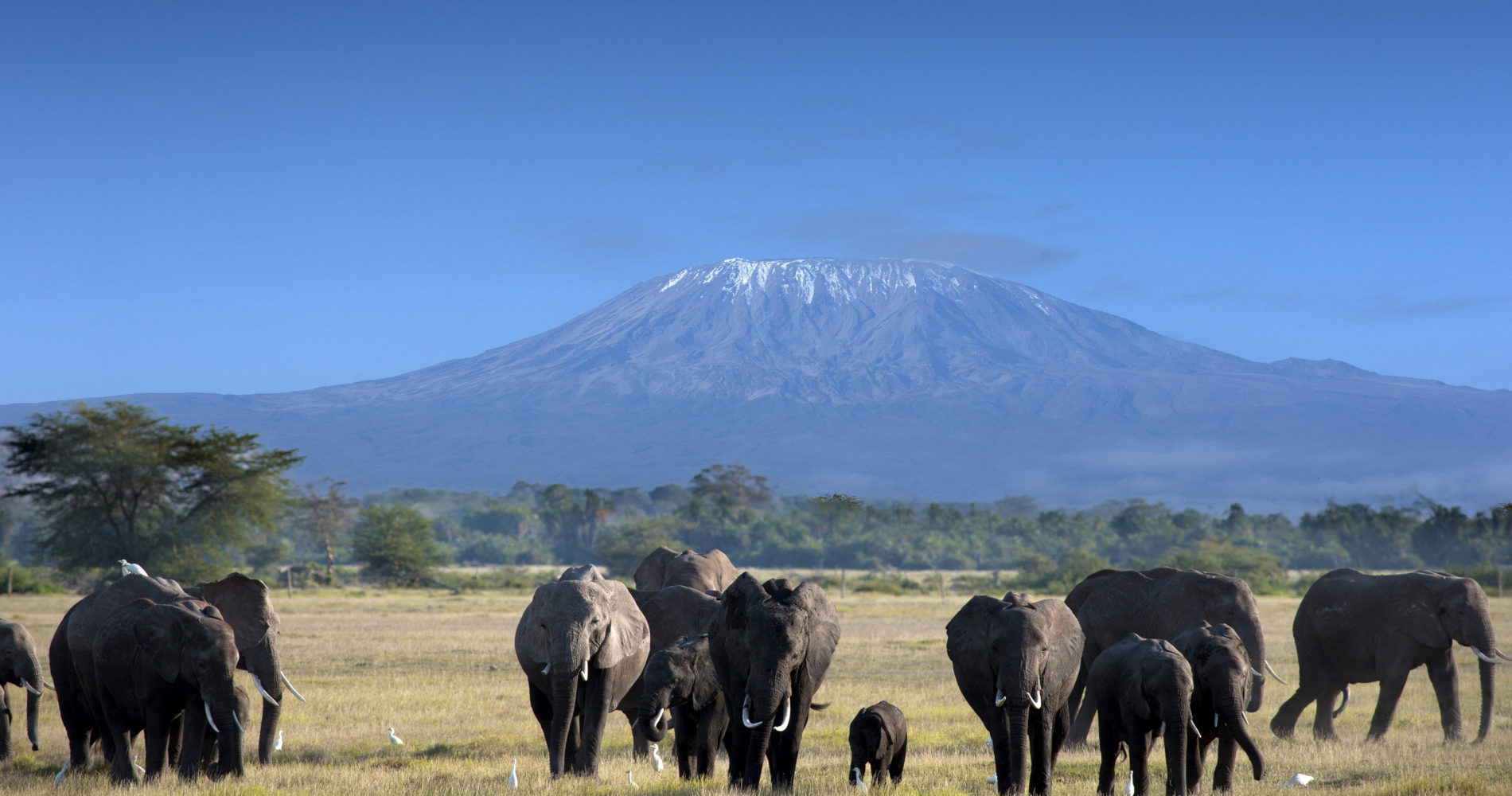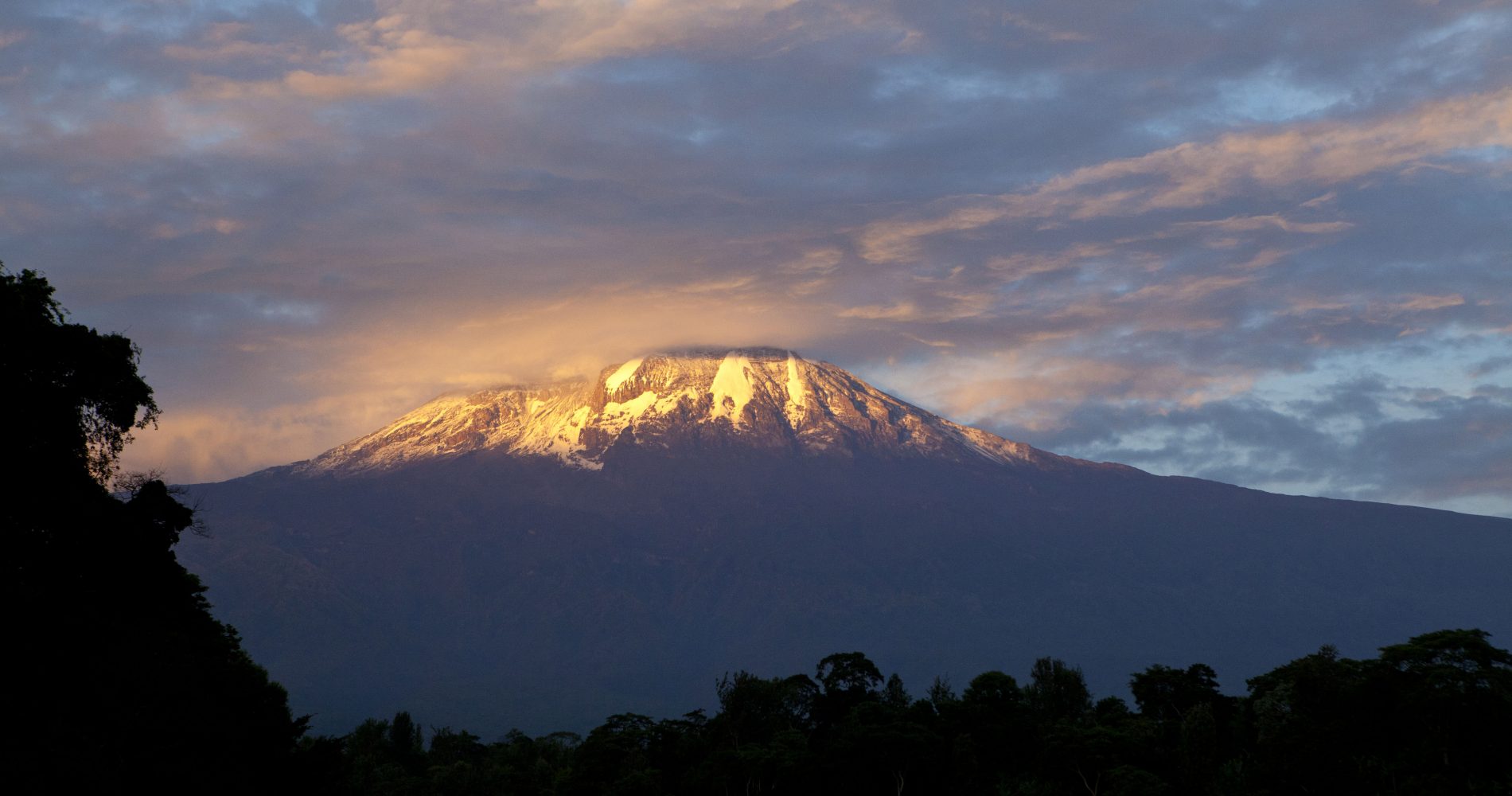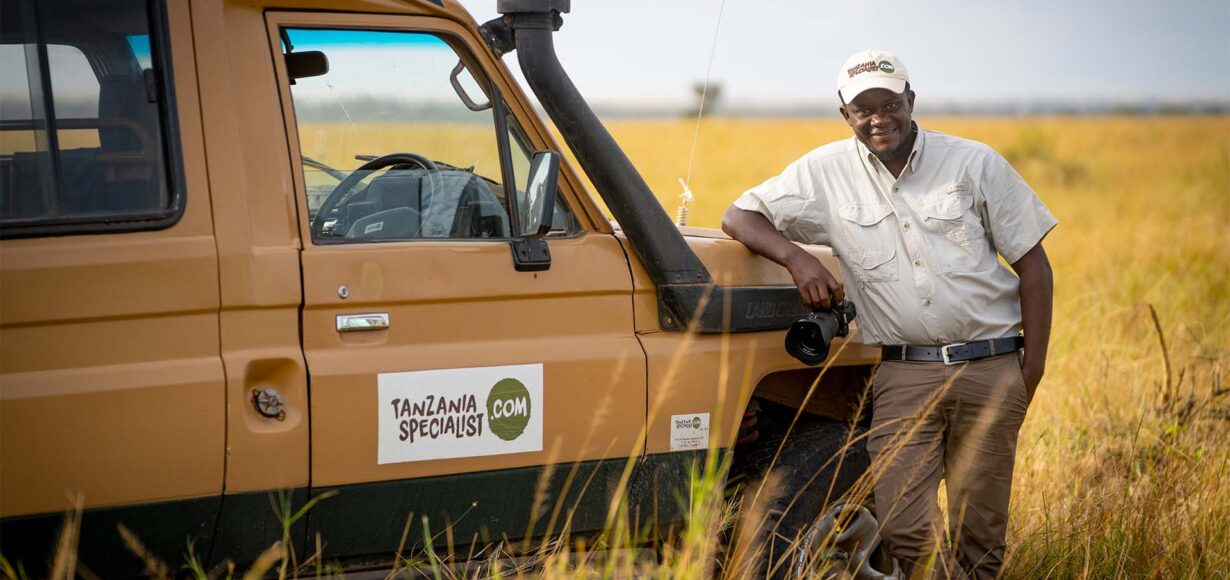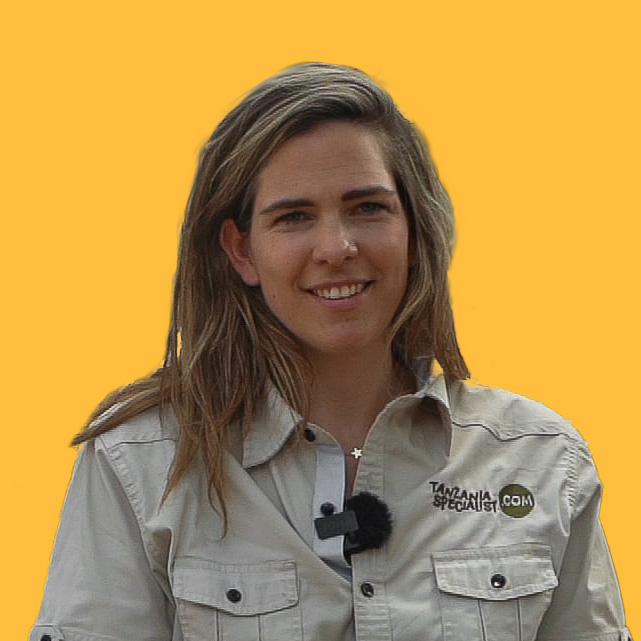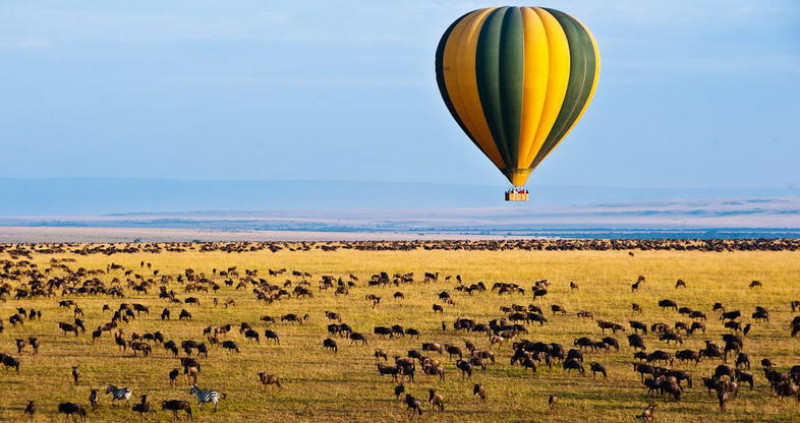Mount Kilimanjaro is Africa’s highest mountain and the tallest free-standing mountain in the world. Each year it attracts thousands of climbers and adventurers from all over the world. Climbing Mount Kilimanjaro is like walking from the tropical to the arctic in just one week. It is a real challenge due to the altitude and the rate of ascent, but also extremely rewarding.
In 1987 UNESCO listed Mount Kilimanjaro as World Heritage Site because of its natural beauty. The variety of vegetation and landscapes is amazing due to the mountains location and immense height. From tropical rainforest with monkeys and birds to the ‘Roof of Africa’ where you see glaciers and an impressive snow-capped summit. On a classic climb you pass through one vegetation zone every day and a half.
The thrill of reaching the top of the Mount Kilimanjaro after days of walking is amazing. At the summit you are rewarded with breathtaking views of the African savannah and Rift Valley. Climbing Mount Kilimanjaro is absolutely an experience of a life time!
Everyone can climb Africa’s highest mountain!
Do you have the dream of climbing Mount Kilimanjaro but wonder if you can make it? Climbing Mount Kilimanjaro is certainly a challenge, but you don’t need to be an experienced climber to reach its summit. If you are healthy and fit it is absolutely within reach. We have an experienced and professional team that can bring you to the top safely.
That is why 95% of our guests reach the top of Africa’s highest mountain. There are many things you can do to increase your chances to reach the summit and to make sure you enjoy the trek. One of the things is buying good gear and practice hikes in your home country a few months before your departure. Since altitude sickness is the main reason people fail to reach the top, it’s important to take your time. Give your body time to acclimatize. Check out below which climbing route fits you best.
Support the Mount Kilimanjaro porters
Porters make it possible for you to climb Kilimanjaro. They carry all your food, gear and supplies and are an essential part of your mountain experience. Without their commitment and hard work, you are not able to climb and enjoy the magnificence of Kilimanjaro. Unfortunately local porters are often exploited and have poor working conditions. That is why we support our porters, this helps improving the working conditions of the porters on Kilimanjaro. If you book a climbing Kilimanjaro trip with us, you automatically contribute to a fair treatment of Kilimanjaro porters.
Best route for climbing Kilimanjaro?
Once you have decided to climb Kilimanjaro, the main question now is which route you should choose. There are seven different routes to the summit. They all vary in length, difficulty, scenery, traffic, accommodation and other aspects. Based on our experience we advise you to choose one of the first 3 routes.
- Machame route
This is one the most popular climbs due to the diversity and beauty of the route. You walk from green rainforest to the beautiful Shira Plateau and the rock lava slopes. The trail circles around the mountain with spectacular views. Another advantage is the gradual ascend, so people have more time to acclimatize, which increases the success rate. The Machame route, also known as the “Whiskey route” has an average to high success rate, especially if you choose the 7 days itinerary. This route is less expensive than most others but has the disadvantage to be quite busy. - Lemosho route
This route is known for its varied and breathtaking scenery. The Lemosho route is also less crowded with climbers than some of Kilimanjaro’s longer established routes. Although Memosho is a more expensive route, it gives climber plenty of time to acclimatize properly. This route is remote and beautiful. High success rate. - Marangu route
The Maranga route is the second most popular route and cheapest one to reach the top of the Kilimanjaro. It is the only route that uses the same trail to ascend and descend and offers hut accommodation (camping is not allowed). This route, nicknamed the “Coca-Cola” route, has a reputation of being one of the easiest paths on the mountain. It certainly is the shortest Kilimanjaro route, yet it gives climbers less time to acclimatize and clarifies the lower success rate. Marangu is unfortunately less scenic than other routes and can be crowded during the peak season. - Northern Circuit route
The Northern Circuit is the longest Kilimanjaro route and also one of the most beautiful and enjoyable ones. The route circles around the mountain and offers great views from all sides of the Kilimanjaro. The summit success rate is very high, as the route is long and gives lots of time to acclimatize. This is a great route for those who want to experience all the beauty Kilimanjaro has to offer and have time and money. - Shira route
This route is very scenic, but also expensive and difficult. We only advise experienced climbers to choose this route due to the high starting point of the route, which gives the body less time to acclimatize. - Rongai route
This route suits the more experienced climbers. Since the ascent and descent are on opposite sides, climbers can see both sides of Kilimanjaro. At the same time this additional transport, to reach the other side, makes the climb more expensive. Rongai is one of the quieter routes, but also dryer and less scenic. - Umbwe route
This route is known as the steepest Kilimanjaro route. Due to its rapid ascend the success rate is much lower. We advise only experienced mountain climbers, who are used to high altitudes, to climb this route.
Climbing Kilimanjaro routes
| Recommended? | Rec. number of days | Fitness | Scenery | Traffic | |
| Marangu | recommended | 5 -6 days | Average | good | high |
| Machame | strongly recommended | 6-7 days | Average | excellent | high |
| Lemosho | strongly recommended | 7-8 days | Average | excellent | medium |
| Northern Circuit | recommended | 9 days | Average | excellent | low |
| Rongai | Only for professional climbers | 6-7 days | very fit | good | low |
| Shira | not recommended | 6-7 days | very fit | excellent | medium |
| Umbwe | not recommended | 5-6 days | extremely fit | goed | low |
Tip from our experts about climbing Kilimanjaro
My name is Phabian, I am a guide and for over 16 years I lead people to the summit. The most popular route is the Lemosho route, due to the breathtaking scenery and views. If you are fit and well prepared, you can also climb the Marangu-, Machame-, and Northern Circuit Route.
My advice:
How long to stay? The duration of the climbing route + 2 nights (arrival and departure day).
Which hotel? The Weru Weru River Lodge is the favourite accommodation of our guest, because of the good friendly service, delicious food, beautiful area with pool next to a coffee plantation.
Travel time Kilimanjaro to the national parks/ islands
- Arusha to Kilimanjaro (start climb): 2,5 hours’ drive.
- Kilimanjaro International Airport to Moshi: 1,5 hours’ drive.
- Kilimanjaro to Tarangire National Park / Lake Manyara: 4 hours’ drive.
- Kilimanjaro to Ngorongoro: 4,5 hours’ drive.
- Kilimanjaro to Serengeti: 6,5 hours’ drive.
- Arusha Airstrip to Zanzibar, Pemba or Mafia island: 2,5 hours.
Best time to climb Kilimanjaro
You can climb Kilimanjaro any time of the year, but the best conditions to climb Africa’s highest peak, are during the months June till mid-March (except November). February is the best month since the temperature is high and the changes or rainfall low. The rainy season starts from mid-March till June and the month November. However there are people who choose to climb Kilimanjaro in April or November since it is quite and less crowded on the trails.
Information and facts
Mount Kilimanjaro is the highest free-standing mountain in the world (5,895 metres, 19, 341 ft). Climbing Kilimanjaro is an unforgettable adventure. Of which people say: “You should do that ones in your life!”
Facts about Kilimanjaro
Climbing Kilimanjaro is a spectacular hike through five climate zones, from the tropics to the Arctic. The zones are:
- Farmland
- Tropical rainforest (800-3000 m)
- Grassland and savannah (3000-4200 m)
- Alpine dessert (4200-5000 m)
- Glacial zone with snow and ice cap summit (5000+ m)
